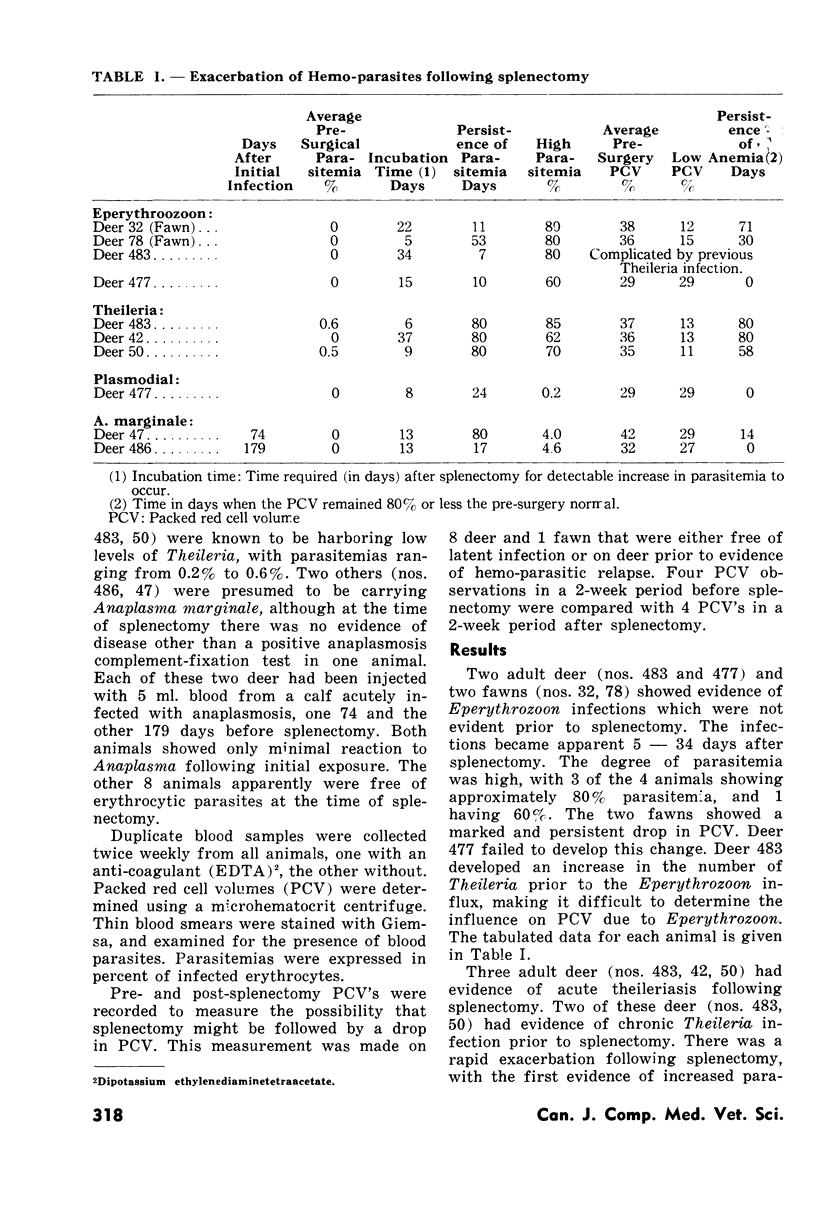Abstract
Eight adult deer and 4 fawns, from wild populations, were splenectomized and observed for evidence of hemo-parasitic relapses. The animals were maintained indoors under tick-free conditions and in the absence of known arthropod vectors.
Following splenectomy 2 adult deer and 2 fawns developed acute Eperythrozoon infections, 3 adult deer developed acute Theileria infections, 2 adult deer developed a demonstrable Anaplasma marginale parasitemia, and 1 adult deer exhibited a low level parasitemia of a plasmodial-like intraerythrocytic parasite. The remaining deer failed to develop a parasitemia following splenectomy.
In the absence of a specific parasitemia no drop occurred in packed cell volume following splenectomy.
Full text
PDF


Selected References
These references are in PubMed. This may not be the complete list of references from this article.
- GATES D. W. The technique employed in splenectomy of bovine animals. J Am Vet Med Assoc. 1953 Feb;122(911):94–98. [PubMed] [Google Scholar]
- ROBY T. O., GATES D. W. The comparative susceptibility of calves and adult cattle to bovine anaplasmosis. Am J Vet Res. 1961 Nov;22:982–985. [PubMed] [Google Scholar]


